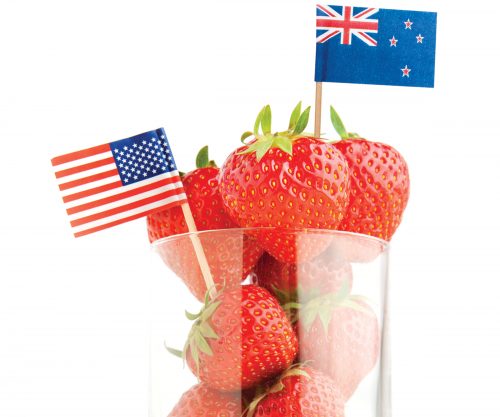
Do you care where your food comes from? Do you purposely choose foods because they are New Zealand grown, or does price come first?
Recent research suggests Kiwis do care about buying locally grown food. In a survey by Consumer NZ and Horticulture New Zealand, 72 per cent of respondents agreed it’s important for them to know where their fruit and veges come from and that country of origin labelling is important to them. Five out of seven Kiwis think it should be mandatory for fruit and vegetable retailers to display country of origin information.
But how easy is it to find this information when we shop?
It varies widely, depending on the product and on how hard we’re prepared to work as shopper. In the fresh produce section, it’s relatively simple. Supermarkets usually tell us on the price signs. Online it’s the same. In packaged foods, though, it can take some hunting to find a country of origin. Sometimes all we get is that frustrating phrase: ‘packed in New Zealand from local and imported ingredients’. This information is far from helpful.
It’s been this way for years, despite an apparent appetite among consumers for more information. But there are some signs change may be on the way. The Consumers’ right to Know (Country of origin of food) Bill was introduced to Parliament last year. This bill called for mandatory country of origin labelling on fresh produce as well as other single-component foods. Not an outrageous thing to ask for, surely.
The Primary Production Select Committee has been consulting on the bill until recently, when the committee’s interim report was released. Unfortunately for shoppers, this report seemed to water down the original bill, recommending country of origin labelling be restricted to fresh or frozen fruit, vegetables, meat and seafood. This would rule out any labelling on things such as nuts, seeds and grains, canned fruit and vegetables, mixed frozen vegetables, crumbed fish fillets, marinated meats, dried fruit and cured meats such as bacon. Bacon is a much-cited example of one of these foods. It is often made from imported pork, but still branded to look like it’s a NZ product because it is processed here. It’s often impossible to know where products such as this have actually come from, unless the manufacturer chooses to tell us.
This is an area, I’m sorry to say, where the Aussies are ahead of us. They introduced compulsory country of origin labelling in 2016, with a two-year introductory period. It became mandatory in July of this year.
The Australian system seems relatively complicated, featuring four different possible label graphics, including ‘grown in Australia’, ‘produced in Australia’, ‘made in Australia from at least x per cent Australian ingredients’ and ‘packed in Australia from at least x per cent Australian ingredients’. The labels feature bar charts showing the percentage of local ingredients. But there’s not a requirement to say which other countries ingredients come from, and some foods are ‘low priority’, so not required to feature the graphics, only a text statement about where the food was grown or produced.
On the other hand, the Aussie system is better than the voluntary system we have. It’s possible our final rules will end up being strengthened and become useful for shoppers. But for now, it’s up to us and our label-reading powers.
Label reading: How to choose and buy local
• Look for obvious ‘made/grown in NZ’ claims. Usually if products are grown here, companies are keen to tell us about it.
• Know what’s in season. If it’s out of season, it’s very likely to have come from somewhere else.
• Know what we grow. We can’t grow everything in NZ. If we’re familiar with what we do produce, we can choose local versions.
• Shop the alternatives. farmers’ and growers’ markets are a sure-fire source of local produce.
• Look for the small print. No matter how ‘Kiwi’ a product looks in its branding, look for a notation on the back to tell you whether it’s made from local or imported ingredients.
Article sources and references
- Consumer. 2018. Country of origin labelling, consumer.org.nz Accessed August 2018https://www.consumer.org.nz/articles/majority-support-country-of-origin-labelling
- New Zealand House of Representatives. 2018. Consumers’ Right to Know (Country of Origin of Food) Bill. Interim report of the Primary Production Committee, parliament.nz Accessed August 2018https://www.parliament.nz/en/pb/sc/make-a-submission/document/52SCPP_SCF_00DBHOH_BILL72059_1/consumers-right-to-know-country-of-origin-of-food-bill
- Australian Competition and Consumer Commission. Country of origin food labels, accc.gov.au Accessed August 2018https://www.accc.gov.au/consumers/groceries/country-of-origin
www.healthyfood.com










